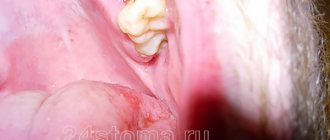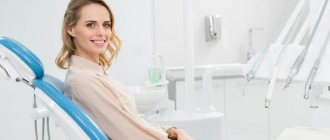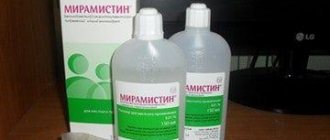Bone tissue atrophies after tooth extraction unless steps are taken to preserve it. Moreover, degradation occurs quickly - loss of up to a quarter of the volume within one year. The consequences of such a loss are the most serious. These include problems with bite, rapid aging of the face, and mobility of the remaining teeth in the jaw. To prevent this from happening, the patient should discuss preventive measures and preventive measures with the doctor before tooth extraction. Options for solving the problem can be very different, so consultation with an experienced dentist is necessary.
A fragment remains after tooth extraction: why does this happen?
A tooth is an integral organ that consists of a crown and root parts. If a root or splinter remains after tooth extraction, it means the tooth has lost its integrity. This occurs due to mechanical stress during removal. Tooth destruction during extraction occurs for a number of reasons.
- Doctor's mistake.
Lack of doctor qualifications is a fairly common cause of complications. Incorrect tooth extraction technique can lead to the destruction of even a relatively strong tooth. - Poor condition of the tooth root.
If the root of the tooth remains in the gum, this is often due to the fact that the root part was in poor condition, so when you try to remove it, the tooth literally breaks into two parts. - When removing a tooth,
the neighboring one was hit, and a fragment from it fell into the socket. This happens quite rarely, but it still happens. This situation is also a consequence of incorrect extraction technique.
Restoration of bone tissue after implant removal and surgery
Unsuccessful implant installation (the doctor’s choice of a very thin or short implant, its incorrect installation without taking into account the bite) leads to tissue inflammation - peri-implantitis, loosening, breakage or rejection of the implanted tooth. In such cases, the implant fragments are removed from the bone, and then a major reconstruction of the alveolar process is required.
Symptoms
This complication has very pronounced symptoms.
- Pain.
Many people perceive pain as a standard consequence of tooth extraction. This is partly logical, but over time the pain does not stop and only gets stronger. This is a clear sign of a complication. - Swelling and inflammatory process.
A tooth fragment injures soft tissues, causing swelling and inflammation. The longer you delay treatment, the stronger the inflammation. - A characteristic coating in the area of the hole.
Appears at a later stage, when the body tries to fight the inflammatory process. - Pus and bad breath.
A late stage complication that requires immediate intervention.
Complicating factors
The extraction procedure itself is ordinary and highly predictable, given the level of modern dentistry and the technological equipment of clinics. Nevertheless, even such manipulation has complications, especially if you take it lightly. It is worth taking into account that each clinical case is individual: if in one case tooth extraction is not very difficult, then in another the dental surgeon has to apply all his skills and use advanced technologies and equipment in treatment. It is no coincidence that the price lists of clinics include the item “Complicated tooth extraction”: you have to pay more for this service. Experts identify several factors that can lead to complications, including fragments in the socket.
- Wisdom teeth.
Because of their remoteness, default eights are quite difficult to remove. They often grow incorrectly or do not fully erupt, which increases the risk of complications during removal. - Retention.
A tooth that has not fully erupted, when only part of the crown is visible above the gum or is completely hidden in the soft tissues. - Dystopia.
The tooth erupts at the wrong degree and abuts its neighbors. - The tooth is severely damaged due to trauma.
In such a situation, when removed, it may crumble, and some of the fragments will remain in the hole.
Peptides for bone tissue restoration in dentistry
There are peptide bioregulators that specifically stimulate the regeneration of jaw bone tissue and promote bone formation. They are also called odontotropic regulatory peptides. Peptides for bone tissue restoration in dentistry are used both for treatment and for preventive purposes. First, you must definitely visit a dentist and, on his advice, choose a drug - balm, capsules or toothpaste. For example, Revidont toothpaste contains three types of peptide complexes (A-3, A-4, A-6) and superoxide dismutase. The therapeutic effect of the paste includes strengthening the structure of teeth, normalizing microcirculation in the oral cavity, restoring bone tissue and having an anti-inflammatory effect.
What to do if the tooth is not completely removed?
If a piece of a tooth or part of a root remains after removal, and the doctor did not notice it, then sooner or later the symptoms described above will appear. What to do if a tooth is pulled out and a fragment remains? First of all, there is no need to panic. A regular x-ray can detect the presence of foreign bodies, including remaining fragments. In most cases, tooth removal does not take much time and is performed using standard surgical techniques. If the case is complex, an incision of the mucosa may be required. Today there are advanced surgical treatment techniques, such as laser surgery. Thanks to this, in difficult cases it is possible to reduce the invasiveness of the intervention. Be that as it may, for a qualified dentist, coping with the complication will not pose any great difficulties. The main thing is to contact him in time.
Many people are interested in whether the tooth root can come out on its own. If after removal part of the root remains in the gum, then you definitely shouldn’t count on it. Sometimes a tooth fragment may come out on its own, but there is no need to hope for this either. Moreover, you should not try to remove a tooth fragment from the socket yourself. You will most likely hurt yourself even more. If you notice remains of a tooth in the hole, go to the doctor immediately.
How to get rid
As already written above, in some cases, the bone protruding from the gums may not be removed. However, if this defect is detected, in all cases it is best to contact your doctor, as he will definitely advise you what to do about this disease. You can also insist on removing the bone or splinter that is bothering you. But if, in the opinion of the attending physician, removal of the periosteum is not necessary, then you will have to pay additionally, otherwise the free clinic will not remove the protruding bone. However, your request to remove a harmless bone will need to be justified somehow, for example, the bone causes some discomfort in the oral cavity and/or looks unsightly.
If, according to your statements, tooth fragments or overgrown bone are causing you severe discomfort and pain, then your treating dentist must thoroughly examine your oral cavity for inflammation or decay. If you detect or suspect that you have these symptoms, the dentist is obliged to do something. As a rule, the doctor’s actions will be as follows:
- If an examination of your teeth shows that you have inflammation and/or decay, or the possibility of such occurrence, then the dentist is obliged to remove the remains free of charge (if you are in a free clinic), or to “set” your displaced jaw bone.
- If for some reason it is impossible to perform all the procedures described above, your attending physician is obliged to give you directions to a hospital where these procedures will not be difficult to perform.
- After the remains of the roots of the old tooth have been removed or the bone has been set, you will be prescribed various antiviral and anti-inflammatory drugs, and will also be advised to better monitor your oral hygiene so that complications do not appear over time.
Removal of tooth remains can sometimes be performed without anesthesia, but most often, in order not to cause unnecessary stress for the patient, the entire procedure is performed under local anesthesia. If, due to displacement, your jaw bone (periosteum) has slightly cut through, then it can be easily “set”; as a rule, such a procedure is not too painful and does not require good anesthesia. However, the jaw must be “set” by a person who knows what he’s doing, otherwise your doctor will only make it worse for you. Sometimes it happens that it is not possible to remove all the remains from the root of the old tooth at once; in this case, you will be prescribed an anesthetic, since you will have to endure the pain in the place of the old tooth until your next appointment with the doctor.
If everything went well for you, then it’s not time to relax. Be sure to strictly follow your doctor's recommendations, take all anti-inflammatory and antiviral medications prescribed to you, and brush your teeth after every meal. It is possible that your doctor will forbid you to eat solid food for some time after the operation, but even if there is no such prohibition, it is best to refrain from eating solid food for a day. Also try not to get sick in the near future, since the appearance of viruses in your body can have a bad effect on the healing of your gums, and if you do get sick, try not to disturb a wound that has not yet healed or has recently healed.
Perhaps for some reason you want to remove the periosteum yourself, although this is strictly not recommended. Before self-medicating, you need to find out more about your problem using the Internet, but it is best to contact a specialist directly for advice.
Then you can proceed to uninstall it yourself (do this at your own peril and risk). The first method of removal is quite simple - you must pull out the bone yourself, but you need to do this with sterile instruments and clean hands, so as not to infect yourself with any infection. You can also, on the recommendation of a specialist, buy a special dental gel with which you will need to rub the periosteum until it can be easily pulled out on your own.
Other situations
Sometimes after tooth extraction a phenomenon called ecostosis occurs. After tooth extraction, the edge of the gum settles, causing part of the bone to protrude to the surface. Many patients may mistake a piece of bone for a tooth fragment. Ecostosis can be easily eliminated using the usual grinding procedure, so there is practically nothing to worry about in this case. Sometimes part of the bone material may come out of the hole, which is replanted with the patient before implantation if the height and volume of the native bone is not enough. Sometimes small pieces of bone material may come out through the sutures, but this is also not considered a serious complication.
How to recover
Most often, to eliminate the effects of atrophy, dentists prescribe surgery. Medicines cannot correct the situation. They often turn out to be useless, even if they just need to slow down regression.
Among the most effective methods of returning the original volume of the bone structure:
- Sinus lift. Suitable for working on the upper jaw only. During the intervention, the surgeon raises the bottom of the maxillary sinus to the height required for implantation. He fills the resulting cavity with special shavings. After sinus lift, you can proceed to implantation.
- Osteoplasty. An operation to transplant a small area of donor/own material. If necessary, the doctor can use synthetic material. The technique is popular because it takes little time. At the same time, the risk of rejection of the transplanted area is minimal.
- Tissue regeneration. An innovative technique that involves growing new bone tissue directly in the patient’s mouth. To obtain the desired result, a special protective membrane is placed in the deformed area. It creates a space in which regenerative processes take place as actively as possible.
- Transplantation of the prepared block. Indicated if you need to restore a large atrophied area of the jaw. The doctor takes material for transplantation from the patient’s bone, obtained from the palate, beard. It is also possible to use donor blanks.
The specialist decides which of the available methods is suitable for a particular patient on a personal basis.










